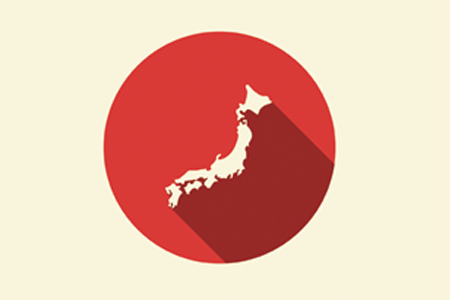Investigating The Myths About Opening A Subsidiary In Japan
By Adam Kennedy, director, Morunda KK
 I was perplexed.
I was perplexed.
Here I was speaking with several biotech executives at the BIO Asia International conference in Tokyo, and none of them had any plans to establish a presence in Japan.
Why not, I wondered. After all, Japan is home to approximately 127 million rapidly aging people. It is the second-largest pharmaceuticals market and the most prosperous country in the region (per head). It has a national health insurance system and some of the best doctors and specialists in the world. There’s no doubt that sufficient patients exist in Japan for a subsidiary to be not just viable, but also profitable.
Yet, for many pharma companies, Japan remains an enigma, a great unknown, where products take forever to get approved; pricing is, at best, opaque; the sales channels are impossible to comprehend; English is barely spoken; and it costs a fortune to do anything. “You’re probably better off out-licensing to a local partner. Right?” commented one of those execs at the BIO conference.
 Perhaps I’m biased; I have been working in this market since 2002. I know what the country has to offer, and I know there are a significant number of English-speaking Japanese professionals here.
Perhaps I’m biased; I have been working in this market since 2002. I know what the country has to offer, and I know there are a significant number of English-speaking Japanese professionals here.
So I decided to investigate some of the common objections (i.e., myths) biopharma companies have regarding setting up and doing business in Japan. To help me, I interviewed two non- Japanese businessmen — Steve Engen and Robert Claar — who have both successfully helped companies establish locations in Japan. Engen runs his own consultancy, Renegen LLC, and has previously set up and run three pharmaceutical companies in Japan (two subsidiaries and one local company). He’s also a Japan advisor to Locust Walk Partners. Claar is the founder and CEO of Vorpal Technologies, a firm that helps companies develop their products in Japan and build a local footprint before making a decision about how to commercialize. For personnel issues, I draw on my own experiences and those of my colleagues at Morunda KK, a Tokyo-based executive search firm focusing on the pharmaceutical market in Japan and Asia.
First, let’s look at the drug approval process, perceived as prohibitively slow. Many firms would be surprised by the Japanese government’s recent reviews of the Pharmaceutical Affairs Law as well as its heavy investments in streamlining processes, especially when it comes to innovation and unmet needs. As Engen points out, “The regulatory environment in Japan has improved significantly over the past few years. It is entirely feasible to carry out regulatory consultations and clinical studies in Japan without a partner. For innovative products that fall under the new Regenerative Medicine law, it is now possible for a company to file for conditional approval in Japan with confirmed safety and a modest amount of Phase 2 data. The new Sakigake system also offers the opportunity for expedited review timelines.” This moves Japan ahead of many Western countries when it comes to the environment for innovation. Claar says, “Approval times are continuing to improve in Japan, and the PMDA [Pharmaceutical and Medical Devices Agency] is transparent and predictable regarding clinical design.” Additionally, the government added more reviewers to the PMDA, helping to reduce review times.
So we can conclude that the regulatory environment here is not the problem it once was. Coupled with this, support from the relevant KOL community is likely to be very high, because “foreigners are welcomed with open arms, and in fact, it can be easier for foreign firms, compared with local companies, to develop meaningful relationships with KOLs, who will want to work with you,” Claar says.
Turning to market access and pricing, it’s well-known that the Japanese government reviews long-listed prices downward every two years. However, according to Claar, “You can get premium pricing in Japan for innovative products, often based on the undiscounted list price in overseas markets, which is a significant incentive.” He adds that there could be lower hurdles to market access for innovative drugs in Japan as compared with some overseas markets. “Once the senior clinician is keen to prescribe the drug, having it added to the formulary can be relatively straightforward,” he explains.
HIRING LOCAL MANAGEMENT HAS ITS ADVANTAGES
There’s no doubt it can be expensive to set up in Japan. But it can be done in steps, allowing you to build your presence in line with your launch plans. Claar suggests working with a trusted local partner that acts as an in-country caretaker that will develop your products and act as your market authorization holder (MAH — you will not be able to sell your products in Japan without an MAH) here until an agreed-upon stage when you might opt to buy your license back (at a prearranged price, rather than being at the mercy of your local licensee or CRO). The actual structure of this could be tailored around each company’s needs, but it might enable you to concentrate your efforts on building your commercial and medical teams’ activities. Having this kind of partnership also can help you select and manage a local CRO, offering you peace of mind.
Organizations such as JETRO (Japan External Trade Organization) offer a lot of practical help to companies establishing an office here, including use of an office for three months as you set up.
Engen notes that costs of hiring local leadership are very comparable to other markets. “If you have the right people with the right mindset, you can succeed in Japan,” he says. “The challenge is whether you can manage cross-culturally in this market.” It’s well documented that English-speaking talent in Japan is comparatively limited, and competition for it is fierce. But a cursory glance at the leadership of the vast majority of successfully run multinational corporations in any industry reveals the presence of bilingual Japanese executives. They do exist. In fact, for a Japanese candidate to be promoted from manager to director with a foreign-capitalized company, they have to be able to communicate with global colleagues.
In my opinion, the cultural divide in Japan is often overstated and sometimes can be used as an excuse to cover other problems companies entering this market may have. Just as there are companies that have made wrong leadership decisions and subsequently found life difficult here, there are numerous examples of firms that have been able to bridge this cultural gap to be successful. The biggest danger is that you choose someone who does not fully engage with your headquarters and allows your subsidiary to drift. If a company is considering setting up an operation in Japan, one option would be to send someone over from HQ to set up and run the business here for, say, three to five years. Although likely having no experience in Japan, this individual would understand the corporate culture and communicate with HQ during the critical initial years. However, in this scenario, it has been our experience that hiring a local executive in a COOtype role can be beneficial. They would work directly under the local president, giving the company both Japanese and HQ acumen and setting up a potential succession plan once the corporate HQ staff departs Japan. Engen says another option would be to hire a candidate who has a successful track record of establishing and operating pharmaceutical companies in Japan. Of course, there are relatively few of these individuals in Japan, though.
IS OUT-LICENSING THE ANSWER?
Engen says that while establishing a Japanese subsidiary to advance the development of your pipeline should add significantly to the value of the company, you have to remember that in doing so, you could lose control over your products and strategy if not managed correctly. “Often, companies that out-license in Japan are frustrated with the information flow and transparency in their local partner relationships. Building into these agreements some ability to have a local presence, including comarketing, could make a big difference,” he explains.
“There is no substitute for having your own feet on the ground in Japan,” Claar adds, echoing a feeling of helplessness that many companies share when they sign away their prized assets only to see disappointing returns. Also remember that the pipelines of potential suitors here will likely be far from robust, so it is in their own interests to make Japan seem as impregnable and unique in order to dissuade you from selling your own products here under your own strategy.
So, how does a company decide to expand into Japan? Engen feels this should be a board-level decision rather than one made only by senior management. Accordingly, it is important to understand the priorities and interests of the board with respect to Japan. Being successful in your core markets is no guarantee of success here, and there is a danger that Japan may prove to be a distraction for your senior management — an expensive distraction. Indeed, there are a good number of companies in many industries (that I certainly could not name here, but they will know who they are) whose Japanese subsidiaries are or were considered failures.
Japan may not work for every company, despite the potential rewards. But many U.S. biotech companies (e.g., Celgene, Biogen, Shire, Gilead) have successfully started Japan operations, and some smaller companies (e.g., Aegerion, Synageva, Biomarin, NPS) have done so, too, Engen adds.
